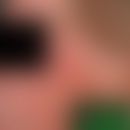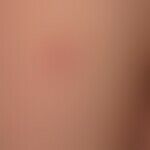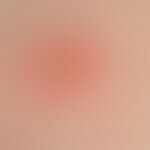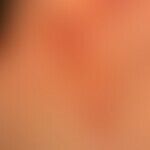Synonym(s)
Bubbles; Bulla; bullae
DefinitionThis section has been translated automatically.
A non-solid skin entity filled with tissue fluid (clear, serous, hemorrhagic).
A blister is a single or multi-chambered, 1.0 to > 5.0 cm large (rarely larger), intra- or subepidermal cavity consisting of blister base, top and contents. Bubbles < 1.0 cm are referred to as vesicles or vesiculae.
ClassificationThis section has been translated automatically.
From a pathogenetic point of view, blisters can be distinguished by the location of the bladder:
- Intraepidermal blistering:
- acantholytic
- spongy
- cytolytic
- Junctional bubble formation
- Dermolytic blistering (below the basal lamina)
- Dermal blistering due to focal oedema.
You might also be interested in
General informationThis section has been translated automatically.
- The possibility of genetic blistering (familial occurrence, first clinical symptoms) must be taken into account in the anamnesis or possibly excluded.
- During the clinical examination, localisation (face, trunk, mechanically exposed areas, mucous membranes), distribution pattern (solitary, disseminated, exanthematic), arrangement (grouped, anular, herpetiform), size, shape, wall structure and the content of the bladder itself (acantholytic cells, leucocytes) as well as the condition of the surrounding skin (inflammatory or normal) are to be evaluated.
- Of differential diagnostic importance are accompanying symptoms such as itching (light and burning in dermatitis herpetiformis Duhring) and pain (various epidermolyses).
OccurrenceThis section has been translated automatically.
S.u. blistering dermatoses.
EtiologyThis section has been translated automatically.
- Blister formation can be autoimmunologic or non-autoimmunologic. In autoimmunological blistering, high-affinity antibodies are formed directed against a single or a few antigens specific for the skin (and the mucous membranes close to the skin). The clinicomorphologic consequences of blister formation are largely identical for all diseases, as they are characterized by their sequelae, e.g., erosions, crusts, secondary infections, scars.
- In non-immunologic blistering, different scenarios for blistering are possible:
- Genetically determined structural weakness e.g. of keratins or anchor fibrils (e.g. epidermolyses)
- Blistering due to tissue death (cytolytic blistering, e.g. zoster, herpes simplex, burns).
- Non-immunological inflammatory processes of various causes with consecutive "displacing" edematous blistering in epidermis (spongiotic blistering) or dermis (dermal edema). Examples are bullous eczema reactions, bullous urticaria, bullous mastocytosis or pyodermic blistering (bullous impetigo).
LiteratureThis section has been translated automatically.
- Altmeyer P (2007) Dermatological differential diagnosis. The way to clinical diagnosis. Springer Medicine Publishing House, Heidelberg
- Nast A, Griffiths CE, Hay R, Sterry W, Bolognia JL. The 2016 International League of Dermatological Societies' revised glossary for the description of cutaneous lesions. Br J Dermatol. 174:1351-1358.
Ochsendorf F et al (2017) Examination procedure and theory of efflorescence. Dermatologist 68: 229-242































